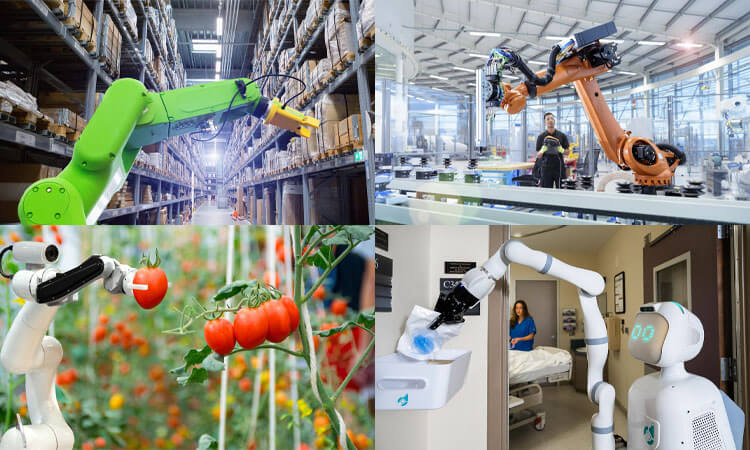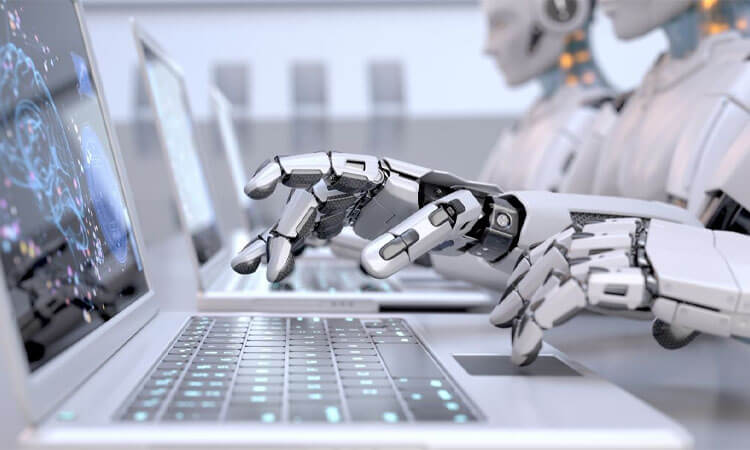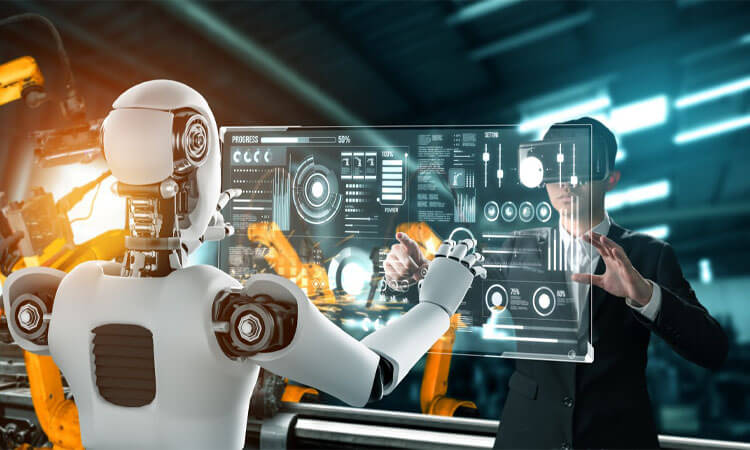The world is becoming increasingly automated, and many people fear this will cause human jobs to lose. However, there have been several advances in artificial intelligence (AI) and robotics technology over the last few years, with machines being able to perform a variety of tasks that once required human workers. It’s true that smart robots are taking over some jobs from humans, but they could also create new ones in their place—this isn’t something to fear but rather something that needs to be embraced.
What are Smart Robots?
A Smart Robot is a machine that can sense its environment, think, and act independently. This definition is not new; it’s how we define artificial intelligence (AI) in general. What sets smart robots apart from traditional machines is their ability to make decisions and take actions based on their environment. They don’t just follow simple commands. They use data to decide what to do next.
In order for robots to become “smart,” there needs to be a way for them to sense their surroundings so that they know what actions are appropriate at any given time. Some smart robots are equipped with cameras, while others have microphones that allow them to detect the presence of humans nearby or even identify words spoken in the microphone itself.
Robots that are capable of making decisions based on their environment can be used in a variety of different ways. For example, they could help people with disabilities or the elderly become more independent. They could also be used in manufacturing facilities so that companies don’t have to rely on human workers as much.
How do They Work?
Smart robots work by using artificial intelligence, which allows them to learn and adapt. They also use sensors and cameras to gather information about their environment. This means that they can be used to perform dangerous or difficult tasks for humans, such as mining or building bridges.
These robots have many components, including:
- Smart software: The software enables the robot to do what it needs to in order to complete its task(s). This can include things like memorizing a user’s voice commands or identifying people’s faces in photos. The software also detects when there is an issue with the robots’ performance so that they can fix themselves before it becomes too big of an issue.
- Sensors: Sensors give smart robots information about their surroundings so that they know where they are going and how far away from obstacles if any, exist nearby (like stairs!). Some examples of these types of sensors include:cameras, lasers/radars for measuring the distance between objects (eavesdropping), gyroscopes for detecting movement directionality (like left vs right), GPS receivers for tracking location coordinates-though note some models may not have one depending on purpose/design! In addition, all models will come equipped with basic equipment such as wheels/legs, depending on model type.
- Battery: The battery powers the robot and allows it to move around. It can be either rechargeable or not, depending on the model type. Some batteries can last for up to 8 hours! Wheels/Legs: Each model of the smart robot will have different types of wheels or legs depending on the purpose of their design. For example, a walker bot would obviously have legs while others like those used in warehouses might only need wheels since they are stationary.”
What are the Uses of Smart Robots?
You can find smart robots in manufacturing, logistics, agriculture, healthcare, and security. The first use of industrial robots was in automotive manufacturing. Today they have applications across many different industries, including aerospace and defense building.

Some of the most common uses include:
- Automated manufacturing: Robots produce goods that humans could not otherwise create or manufacture (e.g., automating production lines).
- Logistics: Robots are used to sort and move items faster than humans can do (e.g., warehouse automation).
- Agriculture: Robots can perform tasks such as sowing seeds or watering crops without human supervision (e.g., fruit picking).
- Healthcare: Robots are used to diagnose diseases, such as cancer or diabetes (e.g., telemedicine).
- Security: Robots can be used for surveillance and emergency response (e.g., bomb disposal).
The most common types of industrial robots are Cartesian robots: These use a set of rails or tracks to move along two axes. An example is Baxter, which uses four arms with grippers and cameras attached so they can see what they are doing. SCARA (Selective Compliance Assembly Robot Arm): These use an articulated arm to move in three dimensions.
What is Affecting the Growth of Smart Robots?
A number of factors are driving the growth of smart robots. The first and most obvious one is technological advances. In particular, the development of artificial intelligence has been a key driver behind this trend. While AI has existed in various forms for decades now, researchers have recently made significant advances in computational power and deep learning techniques that have opened up new possibilities for research into robotics, automation, and machine learning.
Additionally, demand from businesses for increased automation is also expected to drive growth over the next few years. With nearly half (48%) of companies surveyed indicating that they plan to invest more time and resources into developing automated solutions in order to improve efficiency levels at their organizations (via McKinsey), we can expect this trend towards increased use of smart technologies will continue beyond 2020—possibly even longer if economic conditions remain favorable enough through 2024!
Will Smart Robots Help Humans or Replace Them?
Smart robots will change the labor market in many ways. One of the most important questions is whether they will help humans or replace them. The answer depends on how you define “help” and “replace.”
For example, smart robots could perform tasks people don’t want to do, such as dangerous work or repetitive manual labor. That would make our lives easier and improve productivity by making it possible for us to focus on other tasks requiring higher skills and creativity. In this case, we would say that smart robots have helped humans by freeing up their time. They can focus on things more valuable for society than doing menial tasks like cleaning toilets or assembling widgets in a factory line all day.
On the other hand, if these same kinds of jobs were replaced with machines, there wouldn’t be any need for human workers! Their jobs would disappear forever. Because no one needs someone else around so that they can handle something boring. Such as cleaning toilets or assembling widgets in a factory line all day long (there might still be some demand here, but not enough). In this case, we would say that smart robots have replaced humans.
How Will It Impact the Labor Market?
Predicting how smart robots will impact the labor market is difficult, but some basic principles can help clarify our thinking.

First, it’s important to understand that while smart robots will automate some jobs, many other jobs will remain in their current forms. In fact, most experts agree that human labor is not likely to disappear entirely due to automation—at least not any time soon. Instead, it’s more likely that entire industries will be transformed by technology in ways we can’t fully anticipate at this point in time.
Second, smart robots will likely lead to fewer job openings for unskilled workers. More for highly skilled workers who can work with the new systems and technologies being developed today—a trend we see already occurring across many sectors worldwide (e.g., healthcare). As such, changes in employment might occur faster than we might expect from previous technological advances because these changes affect whole industries rather than just individual jobs within those industries alone.”
Third, many of today’s jobs are likely to be transformed by technology in ways we can’t fully anticipate at this point in time. For example, the introduction of ATMs and self-service checkout lines has reduced the number of bank tellers and cashiers needed in our society. Similarly, smart robots could also replace many other types of workers over time. But rather than simply eliminating jobs, it’s more likely that entire industries will be transformed by technology in ways we can’t fully anticipate at this point in time.”
Which Industries will See the Most Changes in the Future??
The first areas to be affected will be the most automated today. The Automotive, construction, and healthcare industries will see significant changes due to the introduction of smart robots.
In the automotive industry, traditional assembly line manufacturing will be revolutionized as workers are replaced by automated systems that can perform more complex tasks without human intervention. The machines used in production lines today may no longer be necessary after smart robots enter into the mix: they will have better dexterity than humans, faster reaction times, and superior maneuverability, as well as being able to operate with greater precision than human laborers. This will allow for lower-cost production processes that result in higher quality products or services being offered lower prices to consumers (i.e., a cheaper car that runs better).
In the construction industry, smart robots can do tasks such as measuring, welding, and painting faster and more accurately than humans. Construction companies will use this technology in order to build buildings and other structures more quickly than ever before.
With respect to healthcare, smart robotics are already being used in some hospitals today: they help doctors perform surgery by holding tools in place while they operate on patients (this prevents the human error from occurring).
What do We Need to do?
As we move into a future where robots are a common part of our lives, what can you do to ensure you’re prepared? First, it’s important to be aware that the jobs that will be created may not match up with the ones that are being lost. Suppose you want to stay ahead of the curve and ensure you aren’t left behind in this new world. In that case, it might help to focus on some general skills: adaptability, problem-solving ability, collaboration, and communication. These are all traits necessary for working with smart machines—and for gaining employment at any time in history when automation has taken hold.
To help get started with some good habits now (and avoid making your job search more difficult), here are some tips from Upwork:
- Always keep learning new things about yourself and others—this will make you more valuable as an employee or freelancer (or both).
- Be open-minded about opportunities outside your industry. Having different backgrounds makes teams stronger overall! Think outside the box when considering where else your skills could be applied effectively too.”
- Always be prepared for change. This will help you stay ahead of the curve in any situation. Be adaptable and willing to learn new skills that may be required in your field as it evolves.
- Have a positive attitude and be willing to take on new roles—this will help you find new opportunities when they arise. Use your unique skill set to stand out from the crowd. This will give you an advantage over others in any situation.
Conclusion
The topic of smart robots and their impact on the labor market is a controversial one. While some argue that robots will take over jobs, others say we should embrace our new robotic overlords. There’s no doubt that robotics will continue to change our lives in the coming years, but it’s likely that humans will always be needed for certain jobs—especially those related to art, music, and creative fields.








